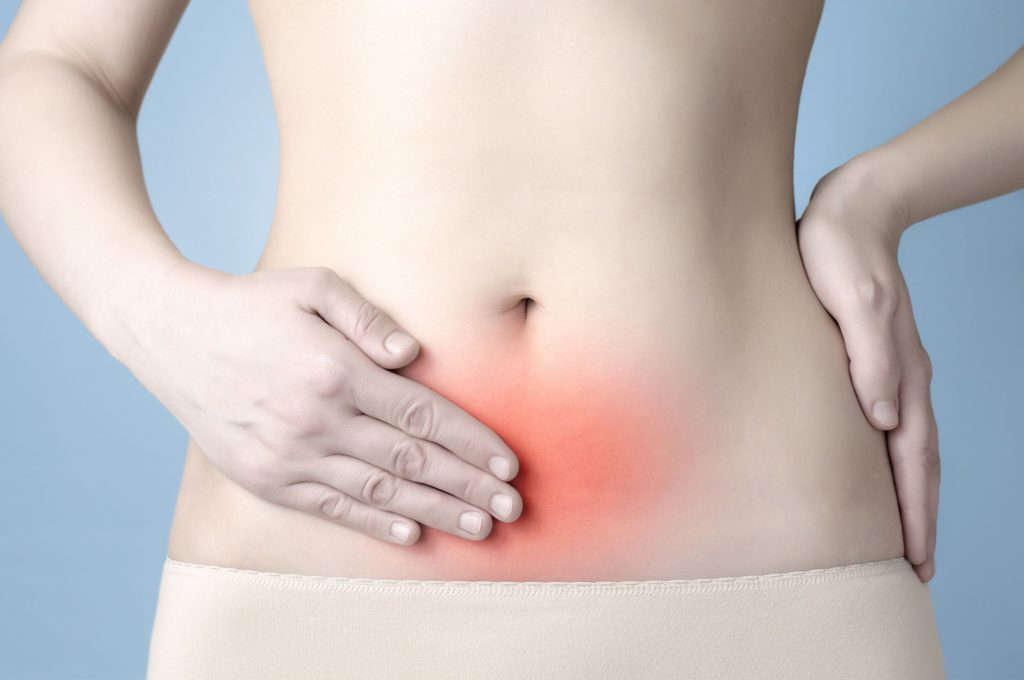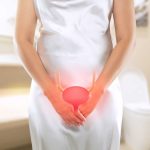
Key facts
- Endometriosis is common, but often takes time to diagnose.
- It occurs when body tissue that is similar to the lining of the uterus (called endometrium), grows outside the uterus — this can cause inflammation, pain, affect fertility and impact your life.
- There are 4 stages of endometriosis, but having a higher stage does not mean you have more pain.
- Treatments include medical, surgical and complementary therapies to help you manage your endometriosis.
- Your doctor will discuss your options with you, to decide what treatment best suits you.
What is endometriosis?
Endometriosis is when body tissue like the lining of the uterus (womb), called the endometrium, grows in other parts of the body. It usually grows in your pelvis but can occur in almost any part of the body. The tissue responds to the hormone oestrogen released from your ovaries. It gets full every month and then breaks down when you have your period. This process can lead to pain, inflammation and scarring, causing organs to stick together (known as adhesions).
Endometriosis is a progressive and chronic condition, meaning it gets worse over time. It can be very painful and can affect fertility. Having endometriosis may affect how you take part in education, work or sporting activities. About 1 in 9 females in Australia develop endometriosis and it causes tens of thousands of hospitalisations every year.
While there is no cure for endometriosis and it can continue until menopause or beyond, there are effective treatments that may relieve symptoms.
What are the symptoms of endometriosis?
People with endometriosis will experience different symptoms. Depending on where the endometriosis is, the severity of the symptoms will change.
Symptoms include:
- abdominal (tummy) or pelvic pain before and during your period, during or after sex or when going to the toilet
- pain in your thigh or leg, which may get worse over time
- heavy periods or irregular bleeding, sometimes with clots, or bleeding for longer than normal or before your period is due
- bleeding from the bladder or bowel, or changes in urination or bowel movements, such as needing to urinate more often
- feeling bloated, with or without pain
- being tired, especially around the time of your period
- not being able to get pregnant (infertility)
For some people, the pain is so severe they cannot take part in education, work or sport. Sometimes, the pain of endometriosis is associated with anxiety or depression.
What causes endometriosis?
Doctors don’t know what causes endometriosis, but there are some things that put you at greater risk:
- Retrograde menstruation. This is when, instead of menstrual (period) blood flowing out of the vagina, some travels backwards along the fallopian tubes and into the pelvis. This blood can contain cells from the endometrium. In some people, these endometrial cells stick onto the surfaces of pelvic organs and start growing.
- Your immune system. If your immune system doesn’t stop the growth of uterine lining-like tissue outside of your uterus, you may develop endometriosis.
- Family history. People who have a close relative with endometriosis are up to 7 to 10 times more likely to develop it.

Other possible contributing factors for endometriosis include:
- long and heavy periods
- frequent periods or short cycles
- starting your period before 11 years of age
- having your first pregnancy when you are older
- low body weight
- alcohol use
How is endometriosis diagnosed?
Many people find out they have endometriosis when they see a doctor for fertility problems. Some people learn they have endometriosis when they have surgery for something unrelated. Endometriosis can be hard to diagnose, with an average delay of around 5 to 6.5 years between first having symptoms and getting a diagnosis.
To diagnose endometriosis, your doctor will ask about your symptoms and examine you. If they think endometriosis may be the cause of your symptoms, they may refer you for an ultrasound, MRI or laparoscopy. A laparoscopy is a type of surgery in which small incisions are made in your abdominal wall and a small scope (camera) is used to look inside. Laparoscopy let’s your doctor see inside your pelvis and collect a small sample of tissue, which can be tested to check for endometriosis.
There are 4 stages of endometriosis: minimal, mild, moderate and severe. The stage depends on the location and amount of endometriosis you have. A higher stage doesn’t always mean you will have more pain.
When should I see my doctor?
If you think you have endometriosis, talk to your doctor about your symptoms.
The Raising Awareness Tool for Endometriosis (RATE) is an online tool that can help you and your doctors recognise endometriosis and its related symptoms. This may help you get diagnosed faster and treated more effectively.
Even when endometriosis is treated, pain may not completely resolve and endometriosis may come back. Ask your doctor about the pros and cons of all your treatment options. You can use the healthdirect Question Builder to help you remember what to ask.
How is endometriosis treated?
If you have endometriosis, you will probably be cared for by a multidisciplinary team. The Australian Government is introducing endometriosis and pelvic pain clinics around Australia to improve access to treatment options and services.
Endometriosis can usually be treated with medicines, surgery and/or complementary treatments like physiotherapy and psychology.
Treatment will depend on:
- your symptoms
- the severity of your endometriosis
- whether you want to become pregnant
Medicines for endometriosis include hormone-based treatments like the oral contraceptive pill (‘the pill’) or a contraceptive implant or an intrauterine device (IUD) and pain relief medicine. Hormone treatments can reduce pain and the growth of endometrial cells. Because they work only as long as you take them, the endometriosis may come back if you stop taking the medicine.
Surgical treatment aims to remove as much of the endometriosis as possible. There are several options, including laparoscopic surgery. This involves having a small cut in the abdomen to allow doctors to remove the endometrial tissue. Surgery may also be combined with medicines to increase the benefits, and help keep your symptoms controlled. In very severe cases, your doctors might recommend a hysterectomy to remove your uterus, but this does not always cure pain symptoms.
Always check with your doctor or pharmacist before you use complementary treatments, as they may interfere with prescribed medicines.
If you are living with endometriosis, make sure you get plenty of sleep, exercise regularly and reduce stress as much as possible.
What are the complications of endometriosis?
Endometriosis can cause bladder and bowel problems. Specially designed exercises can help improve the function and strength of the pelvic floor muscles, which can help ease symptoms of endometriosis. This can also help with the chronic pain of endometriosis.
Ask your doctor to refer you for pelvic floor physiotherapy, or to a psychologist or pain clinic to help you to find the right strategies to manage chronic pain.
Around 1 in 3 females with endometriosis have trouble with fertility. Fertility treatment such as in vitro fertilisation (IVF) can help most of them. Ask your doctor for a referral if you have endometriosis and are having trouble becoming pregnant.


